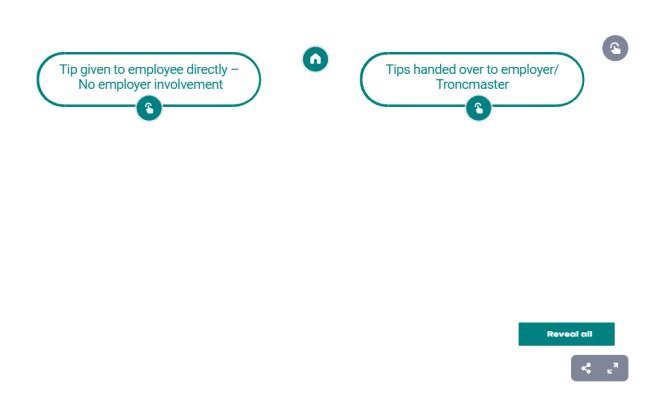In the world of leisure and hospitality, the practice of giving tips and gratuities is a token of appreciation that customers offer in return for quality service. These spontaneous gestures, frequently exchanged by cash and card payments, have accounting implications that need to be considered when processing them through your monthly payroll. However, how tips or service charges are implied or requested and how they are distributed can create different implications for how and when they are reported and their tax treatment. In this article, we demystify some of the complexities in processing tips and explain how to process them in your payroll.
Understanding Tronc and Tips Processing
In order to set the scene, it is worth first clarifying some key terms:
- Tips and gratuities are spontaneous payments offered by a customer, usually cash or card payments.
- Service Charges are added to a customer's bill before it is presented to the customer. If this is marked as discretionary, there is no obligation to pay; it is voluntary. If the service charge is mandatory, National Insurance contributions will always be due on these payments, no matter how these are treated after they are received.
- A Tronc is a pay arrangement to distribute tips, gratuities, and service charges.
- A troncmaster is responsible for the equitable allocation of these payments. Notably, a troncmaster must be someone other than an employer, business partner, or company official to ensure impartiality in distribution.
PAYE, National Insurance (NI) and tax implications
If an employee directly receives a tip or finds one on a table and the employee keeps this with no employer involvement, PAYE (Pay As You Earn) does not apply. However, such earnings must still be reported through the employee's self-assessment tax return, but no National Insurance (NI) would fall due to the amount.
On the other hand, if the employer is engaged in any aspect of the tip distribution process – whether advising the troncmaster or incorporating the process within their payroll – the PAYE scheme becomes applicable. Tax obligations are incurred through either the conventional payroll system or a specialised troncmaster scheme, contingent on the approach.
While taxes are universally applied to tips, the responsibility for deducting these taxes depends on who oversees the distribution of the tips between employees.
If the employer plays a role in any capacity – whether guiding the troncmaster's decisions or handling the process through their payroll – NI deductions come into play.
Legislation provides that any amount paid to an employee which is a payment 'of a gratuity' or is 'in respect of a gratuity', is exempt from NI contributions if it meets either of the following two conditions:
- It is not paid, directly or indirectly, to the employee by the employer and does not comprise or represent monies previously paid to the employer (for example, by customers), or
- It is not allocated, directly or indirectly, to the employee by the employer.
Navigating tronc, tips, and the corresponding NI implications can be confusing and requires close attention to legal requirements, transparency, and fairness. For further information on tronc and liabilities on tips, gratuities, and services charges, HMRC released additional guidance in May 2022. This is available on the gov.uk website.
To view the full article, click here.
The content of this article is intended to provide a general guide to the subject matter. Specialist advice should be sought about your specific circumstances.


